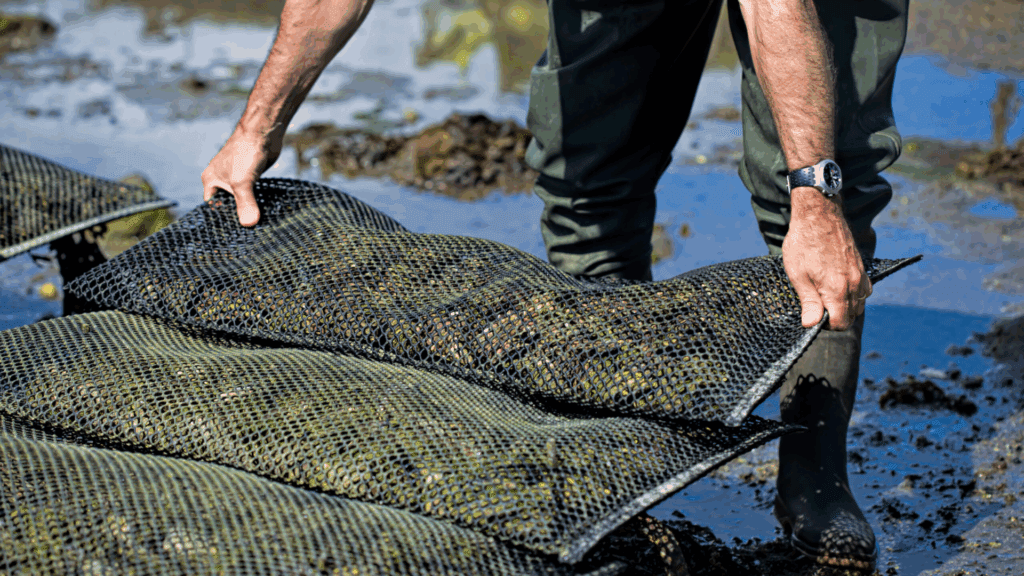Publication date: 28/11/2024
Oyster farming, a must in Charente-Maritime
On France’s Atlantic coast, Charente-Maritime boasts a rich natural, cultural and gastronomic heritage. Among its ancestral traditions, oyster farming is a unique know-how that plays a major role in the region’s economic importance.
The Marennes-Oléron oyster-growing basin, in particular, is a regional landmark, covering over 3,000 hectares of claires – freshwater and saltwater basins that give the shellfish their distinctive flavor.
In Charente-Maritime, more than 1,000 oyster-farming businesses produce around 40,000 tonnes of oysters every year, equivalent to half the national consumption. In Europe’s largest oyster basin, the end-of-year festivities are a time of intense activity, accounting for three-quarters of the region’s annual shellfish sales.
There are three varieties of oysters in Charente-Maritime:
- The Marennes-Oléron oyster: the best-known Charente-Maritime oyster, and the best-selling shellfish. The Marennes-Oléron oyster is a hollow oyster produced locally, with a maturing process in claires. It is regularly exported to the four corners of the world and, since 2009, has benefited from a Protected Geographical Indication (PGI).
- The Pertuis Breton oyster: reputed to be a little more iodized than the previous one, this one is produced between the Ile de Ré and the mainland coast. It does not always undergo the same maturing process as the Marennes-Oléron oyster, and often has a slightly sweet taste.
- Oysters grown on the Ile de Ré: bred in contact with the Atlantic sea air and the salty soil of the Ile de Ré, this third type of oyster has a crisper texture. The Ré oyster is often said to have a salty taste, but is also more mineral than other shellfish from the region.
While these three types of oyster are the most common in Charente-Maritime, a few flat oysters known as “belons” are also found more rarely. Several local oyster farmers are trying to reintroduce this shellfish species to the Charente-Maritime cultivation basins.
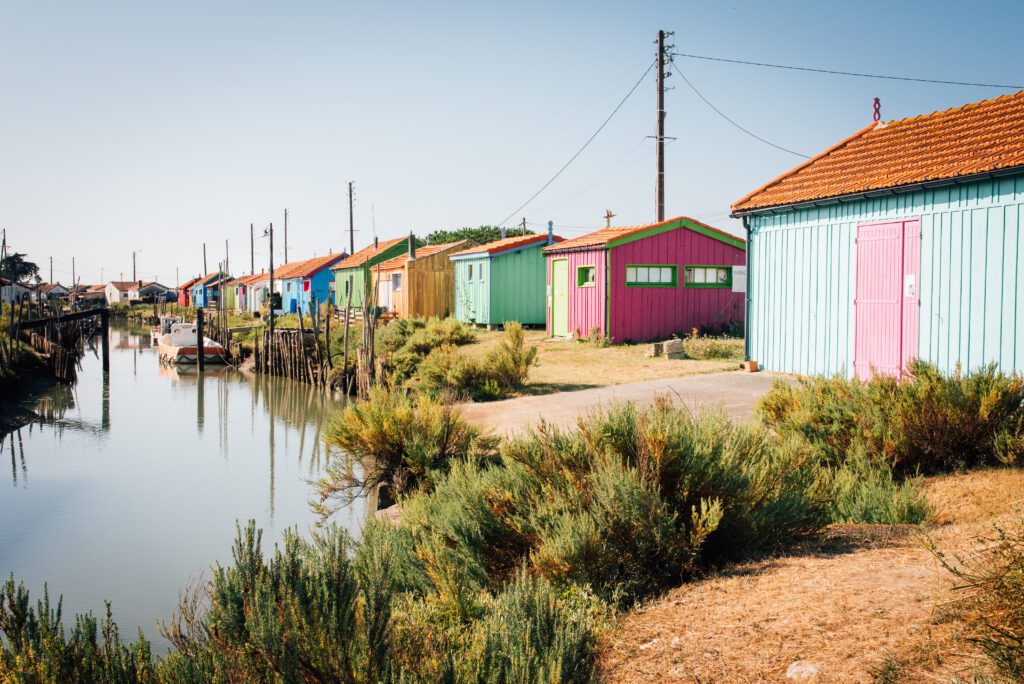
Sailing to discover the oyster culture
Would you like to discover Charente-Maritime’s oyster-farming heritage for yourself and taste the different varieties of oysters? A few days by boat in the region could be just the thing to explore this world!
Port Adhoc Soubise, a member of the Port Adhoc network of ports and marinas, is located just a stone’s throw from the main oyster-farming areas of Charente-Maritime.
Departing from this port, you’ll be able to experience some amazing sailing, through oyster-farming landscapes and exploring magnificent ports of call. A number of traditional and cultural sites will enable you to discover all about oyster and shellfish culture on the Atlantic coast. Then, of course, there are the tastings…
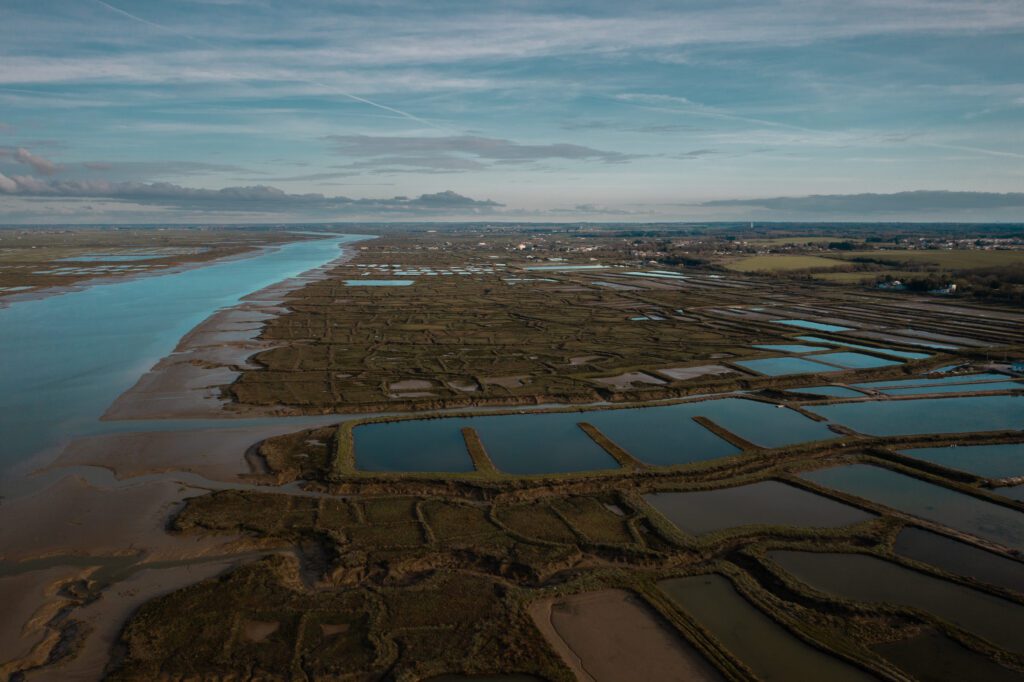
A sailing itinerary to explore the world of oyster farming in Charente-Maritime, from Soubise
Would you like to immerse yourself in the world of oyster farming while sailing? Let’s embark on a gustatory and cultural voyage in Charente-Maritime!
Departing from Port Adhoc Soubise, a few days of cruising will take you to the main oyster-farming destinations in Charente-Maritime.
By motorboat or sailboat, here is a typical itinerary of less than 150 nautical miles that can be completed at your own pace:
- From the port of Soubise to Marennes (about 35 miles of sailing – possible stopover on the island of Aix or at Château d’Oléron)
- From Marennes to Ile d’Oléron (just over 10 nautical miles)
- From Oléron to La Rochelle (23 miles of sailing)
- From La Rochelle to Ile de Ré (26 nautical miles)
- From Ile de Ré, return to Port Adhoc Soubise (40 nautical miles – possible stopover in La-Flotte-en-Ré, or again in La Rochelle)
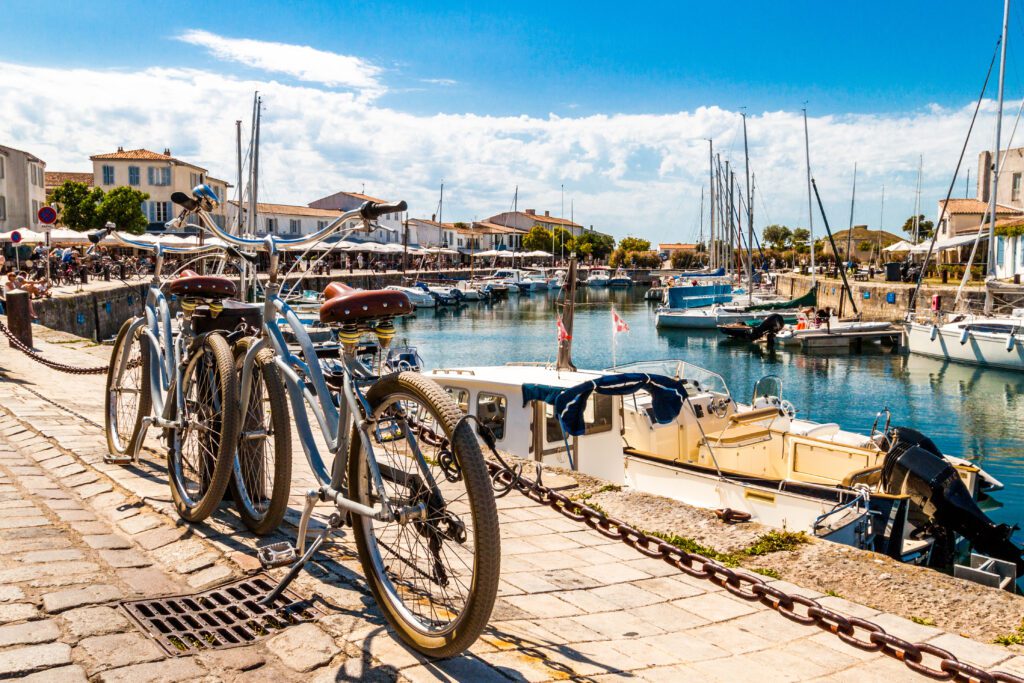
Visit Charente-Maritime’s oyster-farming destinations by boat
Marennes – or Marennes-Hiers-Brouage
On the mainland, Marennes is the heart of oyster production in Charente-Maritime. This is where the famous Marennes-Oléron oysters are produced!
Here, the Cité de l’Huître will introduce you to the world of oyster farming, with exhibitions, events and tastings, as well as bike rides around the oyster beds and maturing marshes. Don’t know how to open an oyster? The cultural center also offers workshops on how to do it!
If you’re interested in oyster culture and are visiting Marennes in autumn, don’t miss the Fêtes de l’Ostra which include meetings with local oyster farmers, culinary workshops, tastings and shows.
Tip: If you’d like to moor elsewhere than in Marennes, or if you’d like to extend your stay, you can also visit the port of La Tremblade, on the left bank of the Seudre. A ferry boat regularly links up with the right bank and the town of Marennes.
Oleron island
France’s largest island on the Atlantic coast, Oléron boasts a rich oyster-farming heritage. Boaters interested in oyster farming often stop off here, to stay amidst colorful wooden oyster huts and salt marshes transformed into oyster beds.
In Oléron, you can taste the famous Marennes-Oléron oysters with the oyster farmers, in the huts, on the oyster beds or on the production sites. Not-to-be-missed sites include the Château-d’Oléron, the Port des Salines – from which you can take guided tours and boat trips with tasting – or the Fort Royer oyster site in Saint-Pierre-d’Oléron.
Finally, the Route des Huîtres may also be of interest to you: this is a coastal route of around five kilometers, between Château-d’Oléron and Boyardville, giving access to several oyster-farming channels.
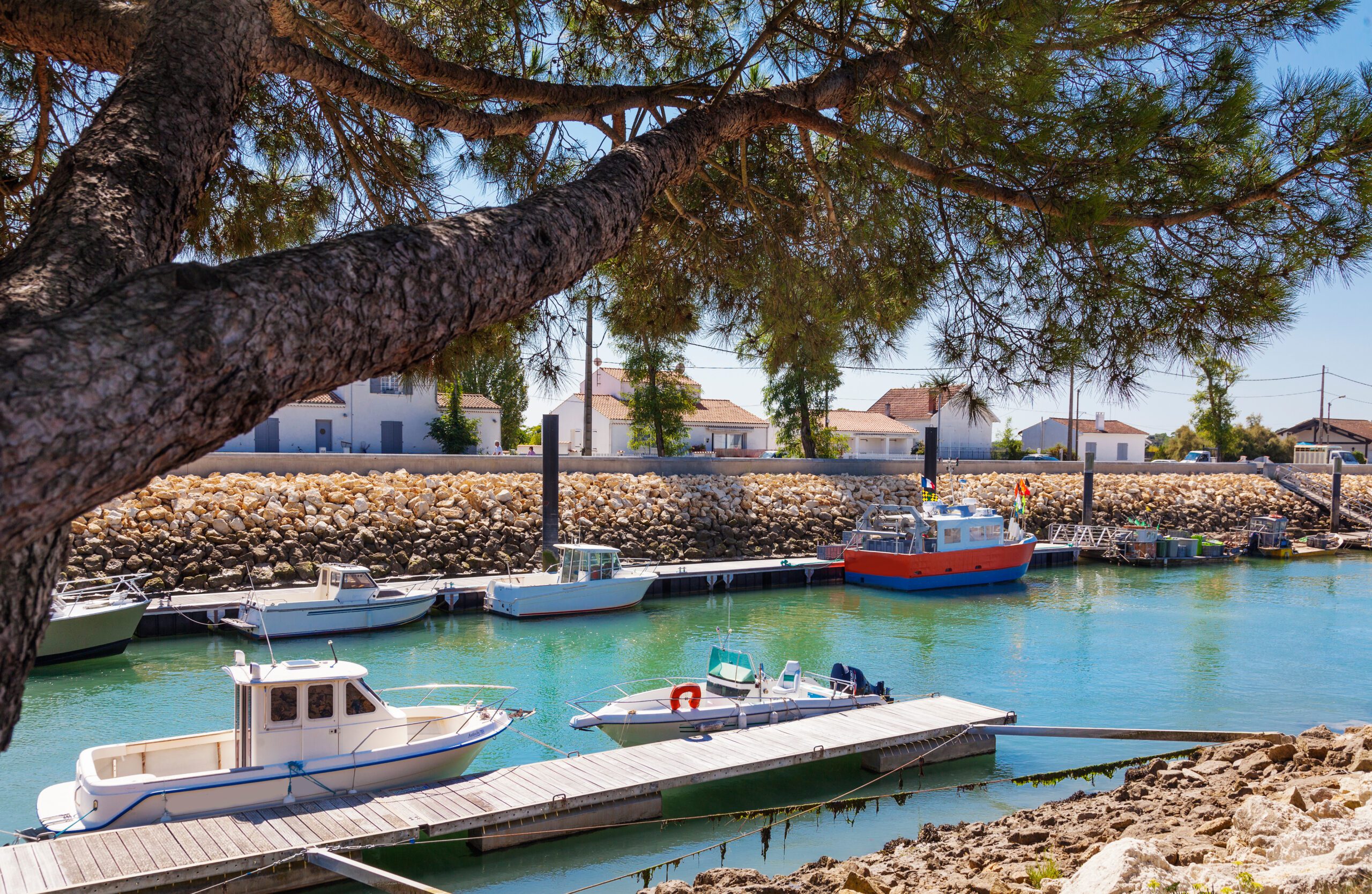
La Rochelle
La Rochelle is the ideal place to stop for a taste of the Pertuis Breton oyster. Just a stone’s throw from the oyster-farming zone, it’s a lively and welcoming place to stop off, where you’ll have various options for mooring: depending on your preference, you can call at the Vieux-Port or the Port des Minimes. Both are easily reached, in any case, thanks to the Passeur, or Sea Bus!
In La Rochelle, you can buy and discover different varieties of oysters from producers at the city’s central market and in numerous restaurants. Extend your visit inland and explore the region’s oyster beds.
Ile de Ré
Just a few nautical miles from La Rochelle, the Ile de Ré is another great place to learn about oyster farming in the Charente-Maritime region.
If you stop off at Ars-en-Ré, for example, you’ll have easy access to several small oyster ports and direct oyster sales from the oyster farmer. If you cycle around the island, you’ll see that the oyster-farming tradition has left its mark on the island too, in addition to salt production.
Tip: Depending on the characteristics of your boat, other harbours in Ré can welcome you and give you access to the oyster culture. Saint-Martin-de-Ré, for example, or La-Flotte-en-Ré.
You now know all our recommendations for discovering the world of oyster farming in Charente-Maritime with your boat, from Port Adhoc Soubise.
Looking for a different kind of sailing, and more destinations in the area? There are plenty of other places to visit from the port of Soubise!

